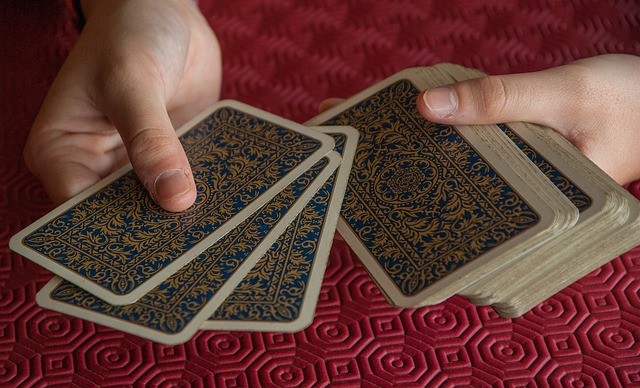The November Creative Meetup was facilitated by Jennifer Crystal, author of One Tick Stopped the Clock. Jennifer is a “story coach” with the Health Story Collaborative which hosts the online Meetups. She also conducts the Writing to Heal Immersive at the Grubb Street Center for Creative Writing. Jennifer has a long history in writing about her experience with Lyme Disease and sharing her knowledge with others who have contracted the disease and other tick-born illnesses. Since 2013, she has been the writer of a weekly column for the Global Lyme Alliance and her enlightening and inspiring blog posts can be found on the Alliance website.
Jennifer’s medical journey
Jennifer was bitten by a tick on a camp when she was 19 years old but had to experience many frustrating years of misdiagnosis. At 25 years of age, she was finally diagnosed with Lyme Disease which led to the Epstein-Barr virus (EBV) infection that causes Mononucleosis. Jennifer was bed-ridden and experienced multiple symptoms that doctors had not been able to explain. In her period of misdiagnosis, she was variously told “to rest”, “eat things close to the ground” (e.g. chicken and turkey), and “talk about your feelings” (assuming that the illness was psychosomatic, not real). Grace Currey from Australia (bitten by a tick in the US) provides a vivid description of what it was like to have Lyme disease that was not recognised by medical professionals in her home country.
Jennifer Crystal had a five-year journey to wellness and remission of the Lyme disease. However, she then had to experience a “searing relapse” and eventually found a new balance and developed her teaching-coaching career. Earlier, she was unable to commit to relief teaching because of her inability to guarantee that she could manage physically or emotionally. She is now a leading proponent of the multiple benefits of sharing your health story and teaches people how to write-to-heal.
Stimulus questions during the Creative Meetup
Typically the Creative Meetups begin with a writing stimulus of some kind such as a poem, article or book extract. Jennifer introduced herself to the group and read a few brief sections from her book which served as a basis for creative writing by group members and story sharing in the group. Jennifer’s stimulus questions flowed naturally from her book extracts:
- Write about a time when you felt brushed off and what you wished that person could have seen on the inside, or
- Pick a single object related to your story and write about it in a poem or prose – see where it takes you!
These were both challenging and fruitful questions that led to some insightful, creative writing by the group and follow-on sharing and discussion. The level of creativity, resilience and insight in the group always amazes me. The Creative Meetup process illustrates the healing power of storytelling and demonstrates the benefits of this approach to “narrative medicine”.
Jennifer’s healing strategies
Besides the medical solution of months of antibiotics, Jennifer identified the need to change her mindset about her chronic illness. She adopted a number of strategies to achieve this:
- Integrating chronic illness into her life – she established a “new normal” which addressed the question, “How to live well in the context of a chronic illness?”. This very much involved self-acceptance and avoiding denial. It also meant acknowledging that there was “no going back”.
- Shedding an identity made impossible by the chronic illness – Jennifer’s dream was to become a skiing instructor – a role very much tied up with her self-image and personal goals. This identity was no longer possible given her disabilities precipitated by her chronic illness. She had to shed her ”skier instructor identity” and find a new sense of self. She asked herself the question, “if I can’t [follow this dream], who am I?”. This required her to value herself for who she was, not who she might be or could become. She recognised that she was still a caring person, who had friends that she connected with, and was still a writer.
- Pacing herself – slowing down and recognising that she needed frequent sleep and suffered from brain fog and other debilitating symptoms. It meant napping each day, taking on freelance writing, listening to her body and sharing the load by moving in with her parents. It also meant building stamina gradually, not trying to achieve her previous “workaholic” status. It required her to accept that things would take much longer than previously to complete and that healing from chronic illness is not a linear process, but an undulating journey of indeterminate length.
- Learning to say “no” – part of self-care during chronic illness is to being able to say “no”. Jennifer reiterated the view that “No is a complete sentence”. Saying “no” enables us to set personal boundaries. Jennifer encouraged us not to fall into the “explanation trap”, which itself consumes energy and can lead to exhaustion and frustration. We don’t have to explain everything or give a reason for our “no”. She suggested that we could use her phrase, “No, that would not be healthy for me now”.
- Writing – the process of writing enables our inner landscape to become outer, to express the feelings that are hidden inside us. Writing can change our mindset and create freedom. Initially, Jennifer could not write about her illness and all that it entailed, so she concentrated on writing to her friends and family. Eventually, she was able to address the issues of her chronic illness, including the challenge of “not being seen” or understood. She found that writing enabled her to be more honest and vulnerable. It helped other people to see the effects of chronic illness and to become more compassionate in their interactions with others.
- Joining a community – the Health Story Collaborative (HSC), for example, provides a community where people are encouraged to share their health stories either verbally or in writing. Their Creative Meetups are one form of regular online interaction in a community that provides social support and encouragement. Jennifer found that undertaking a course in creative writing enabled her to share her chronic illness with her classmates who did not judge her, were in a learning mode too and were exploring making the “inner world” visible. She also noticed that people were better able to assimilate information about an individual’s chronic illness when it was shared in written form.
Reflection
In the discussion that followed the creative writing of participants, one major issue emerged. This involved people not understanding the hurt that their well-intentioned words can cause to someone who is suffering from chronic illness. Comments such as “You look good” or “You don’t look ill to me” can be particularly hurtful when someone with a chronic illness has gone to the trouble (despite the difficulty involved) to “dress up” or put on a “façade” when they are going out in public (leaving their bed and track pants behind)!
The well-intentioned comments can be experienced as “devaluing” the experience of a person with a chronic illness. It can also trigger memories of mistreatment by the medical practitioners who were unable to relate the presenting symptoms to their “medical cookbook”. Annie Brewster (founder of HSC) contends that many patients with chronic illness experience “frustration, invalidation and exhaustion” when their ongoing symptoms don’t fit neatly into the “diagnostic algorithms” of medical practitioners.
As we grow in mindfulness through reflection and sharing our stories, we can increase our sensitivity to the situation and needs of others and experience what Jennifer describes as developing “greater compassion for others”.
During the creative writing segment of our Meetup with Jennifer I wrote the following poem to reflect some of the earlier sharing and my own experience of dealing with medical professionals who consider the existence of MCAS (Mast Cell Activation Syndrome – my chronic illness) as controversial as the concept of Lyme disease:
Validation and Accommodation
There’s no place for me in cookbook medicine –
so I don’t have an illness,
it’s all in my head.
Until something happens that is considered serious –
then perspectives change.
I appreciate my body –
the millions of daily decisions,
the miracle of breath,
the ability to write, walk, run and play tennis.
Now my body seems to be letting me down –
treating good food as invaders,
hypervigilant, ever on the alert.
My new bodily reality –
reflecting the dark and light of nature,
creating a challenge to accommodate the “new normal”,
with its remissions and relapses,
enabling and disabling in unpredictable ways.
___________________________________________
Image by Márta Valentínyi from Pixabay
By Ron Passfield – Copyright (Creative Commons license, Attribution–Non Commercial–No Derivatives)
Disclosure: If you purchase a product through this site, I may earn a commission which will help to pay for the site, the associated Meetup group and the resources to support the blog.









